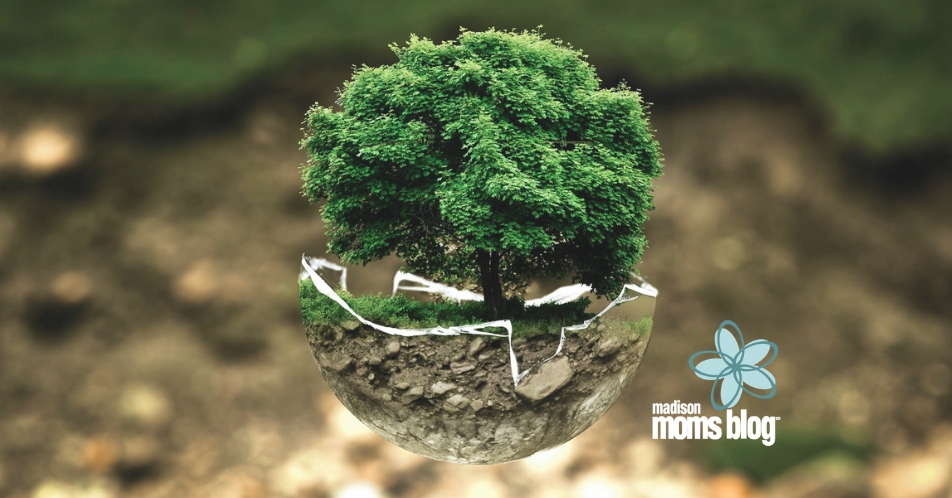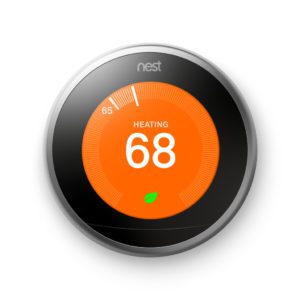
I’ve always been an eco-conscious person. But it seems like climate change has been especially in the public eye for the last week or so. From WBUR’s On Point, to the website Scary Mommy, there’s been a lot of people warning us about how important this topic is, and what some of the consequences could be if we fail to act. It’s hard to not feel helpless due to the enormity of it all. It’s enough to make anyone want to just throw their hands up in the air and say, “I’m just one person, what can I do?” Well, as it turns out, a whole lot. We don’t need to wait for other people to act to make a difference. And why should we? We want to be able to tell our kids, and grandkids, that we did our part to make their world a better place. Because that’s the ultimate goal, to make the future better for all of our offspring, right?
So here is my list of things which you can do to help to make the future a safer place for future generations:
1. Sign-up with your local power utility to purchase renewable power
It’s extremely simple to do and doesn’t really cost much more per month, all things considered. If you live in the Madison area, and get your electricity through Madison Gas & Electric, here is the link to their Green Power Tomorrow service. If Alliant Energy supplies your electricity, then here is the link for their Second Nature service.
2. Get an energy audit for your home and then act on it
Hire an energy expert to come to your home and evaluate it for its energy efficiency. Focus on Energy, in the Madison area, offers a consultation service which provides you with a whole home review. They will itemize your report in such a way that it shows you where you can receive the most value for your time and money. They also offer rebates for work you do (up to $2,250) and will provide you with a $250 bonus incentive if you do whole home improvements and heating and cooling improvements at the same time.
Whether or not you take action on the report right away, or down the line, having this information on hand can be extremely helpful when trying to figure out what house project you wish to tackle next. Plus, anything you do to cross these items off your list will help you save money and energy in the future. Win win in my book!
3. Program your thermostat
Did you know energy experts estimate heating and cooling your home can account for around 44% of your home’s energy usage? That’s about the same as all your appliances, electronics, lights, and water heating. If you’re not programming your thermostat to more eco-friendly temperatures when you’re not home, or at night, you’re wasting energy. This interactive page from Madison Gas & Electric does a great job of explaining how adjusting your thermostat can save money and energy.
 If you have some expendable money, and are looking at automating this process, consider getting a smart thermostat like the ones from Honeywell, Ecobee, or Nest. These thermostats do a great job of doing a lot of the work for you so that you can just enjoy a comfortable home, while using less energy. If you’re looking to make a substantial change, this is probably one of the biggest things you can do to cut your energy consumption.
If you have some expendable money, and are looking at automating this process, consider getting a smart thermostat like the ones from Honeywell, Ecobee, or Nest. These thermostats do a great job of doing a lot of the work for you so that you can just enjoy a comfortable home, while using less energy. If you’re looking to make a substantial change, this is probably one of the biggest things you can do to cut your energy consumption.
4. Turn off and unplug electrical equipment when not in use
Have you ever heard of phantom power? It’s the power your electronics draw from the grid even when they are turned off. This includes your power cords for your phone and computer. When you leave these things plugged into an outlet, they continue to draw power from the grid. The good news is there are smart power strips and outlets which can help make your life more convenient. These devices will allow you to keep your gadgets plugged in and minimize, or eliminate, power draw that happens when a device is turned off.
5. Replace old light bulbs with more efficient ones
CFL and LED light bulbs are way more efficient than the older incandescent or halogen bulbs. When your old bulbs die out, consider replacing them with these more efficient bulbs. Ideally, replace them with LED bulbs. They are the most efficient and can last anywhere between 12-30 years depending upon the brand. If money is a concern when replacing a light bulb (when isn’t it?) consider buying Cree LED light bulbs. They’re one of the higher rated companies in terms of quality / value.
6. Tweak your laundry habits
Studies have shown most laundry detergents clean just as well in cold water as they do in warm or hot water. So why waste the energy with these cycles when cold works just as well? Also, try to limit your loads to full loads of laundry. Even with high efficiency washers, you’ll wind up using more water if you do small loads than if you do large loads.
Additionally, dry your clothes on a drying rack. Energy experts claim you can save about 337 lbs of CO2 a year (based on 150 loads). We’ve been drying our clothes on a drying rack for some time now, and to be honest, it’s really not that much more work. Plus, in my case, I hate folding the laundry, and when you have it on a drying rack, it makes it that much easier to just grab and go and be ready for the day!
7. Take shorter showers
This one doesn’t need too much explanation. The shorter your shower, the less water you use. The less water you use, the less needs to be filtered at the water filtration plant. The less that is filtered there, the less energy they use to filter water.
8. Ask yourself, “Do I need to take the car?”
Almost all of us need to go places daily. Whether that’s to work, the store, playdates, etc., it’s pretty much a given that we’re going to leave our house at some point during the day. So whenever possible, ask yourself “Can I walk, bike, or carpool to my destination?” If you can, take these alternative means of transportation.
9. Consider hybrid or electric vehicles
When it comes time to buy a new car, consider buying a car consider a used car, a hybrid car, or an electric car. If you can’t afford a new car, consider a buying a used hybrid car. Used cars, in some ways, are more eco-friendly than new cars because the CO2 that is emitted from the manufacturing of new cars has yet to be released into the atmosphere.
If you can afford a new car, then consider buying a new hybrid or fully electric car. Especially if you plan on using that new car for a long time. The fuel efficiency for these new cars are getting better every year, and the range anxiety that sone people had conerning the fully electric cars are beginning to become a thing of the past. Most new fully electric vehicles will now allow you to travel around 200 miles on a single charge. You shouldn’t have to worry about running out of power while driving since the average daily commute to work and back is about 40 miles (according to multiple sources). And since most families are a 2 car family, you can always use the other car for those long family road trips if your electric vehicle’s range is not sufficient.
The best part about all electric vehicles… as our energy grid moves away from fossil fuel energy to more renewable sources our vehicle becomes more and more “green”. What other kind of car can do that??
10. Keep your tires properly inflated
Properly inflated tires maximize your MPG because they limit the amount of heat loss and friction that is created when your tires move across the road.
11. Stop junk mail from being sent to your house
 Did you know that if we were able to stop junk mail from being sent out each year we could save the equivalent of taking 2.8 million cars off the road? I know I’m tired of getting junk mail, so why not do something about it? There are numerous websites that can help you eliminate the number of junk mailings you receive. Here’s a list of some of them: 41pounds.org, Catalog Choice, PaperKarma, us.junkmail.com and stopthejunkmail.com.
Did you know that if we were able to stop junk mail from being sent out each year we could save the equivalent of taking 2.8 million cars off the road? I know I’m tired of getting junk mail, so why not do something about it? There are numerous websites that can help you eliminate the number of junk mailings you receive. Here’s a list of some of them: 41pounds.org, Catalog Choice, PaperKarma, us.junkmail.com and stopthejunkmail.com.
12. Buy food local, buy in season
When possible, buy food which is in season and that is grown locally. By doing this you are reducing the need for shipping the food over long distances, effectively cutting down on the carbon expenditure of the shipping process.
13. Buy less meat
Raising animals for food requires a lot of energy: food and water for raising the animals, heat for the colder months, transportation to the slaughtering facilities and then to the stores. So the next time you’re planning your grocery list, consider adding in a few meatless meals. It’s a small thing, but it can go a long way in helping to reduce the amount of energy needed for your meals.
Individually, these things may seem small and insignificant. But when these things are added together, their collective savings can, and do, amount to significant savings. I truly believe that the things on this list are easily attainable. Now we just need to do our part to make this world a better place for our kids, one small step at a time.
Site References
- 41 Pounds. http://www.41pounds.org/
- Carbon Footprint. http://www.carbonfootprint.com/minimisecfp.html
- Carbon Fund. https://carbonfund.org/reduce/
- Catalog Choice. https://www.catalogchoice.org/
- COTAP. http://cotap.org/reduce-carbon-footprint/
- Cree Light Bulbs. http://creebulb.com/
- Ecobee Smart Thermostat. https://www.ecobee.com/
- Focus on Energy. https://focusonenergy.com/residential
- Georgetown University. https://sustainability.georgetown.edu/getinvolved/thingsyoucando
- Global Stewards. http://www.globalstewards.org/reduce-carbon-footprint.htm
- Green Madison. http://greenmadison.org/
- Honeywell Smart Thermostat. http://yourhome.honeywell.com/en/products/thermostat/lyric-thermostat?utm_content=NHI&gclid=CjwKEAiAm8nCBRD7xLj-2aWFyz8SJAAQNalaV0taaMpJHPYtiSPnCXsrSz0IommV32gnm2HgN5UaHBoClPbw_wcB
- Mashable. http://mashable.com/2013/10/22/reduce-carbon-footprint/#CT_Va4yFOkq0
- Madison Gas & Electric. https://www.mge.com/saving-energy/home/heating-cooling/thermostats/
- Nest Learning Thermostat. https://nest.com/blog/downloads/2012-04-05/Energy-waste-infographic-updated.pdf and https://nest.com/thermostat/meet-nest-thermostat/
- On Point. http://www.wbur.org/onpoint/2016/12/12/epa-environment-trump-climate-change
- PaperKarma. https://www.paperkarma.com/
- Project Home http://www.projecthomewi.org/
- Scary Mommy. http://www.scarymommy.com/parents-need-care-global-warming/
- Stop The Junk Mail. http://stopthejunkmail.com/
- Story Bridge TV. https://storybridge.tv/greenview/smart-thermostats/ and http://storybridge.tv/greenview/phantom-power/












